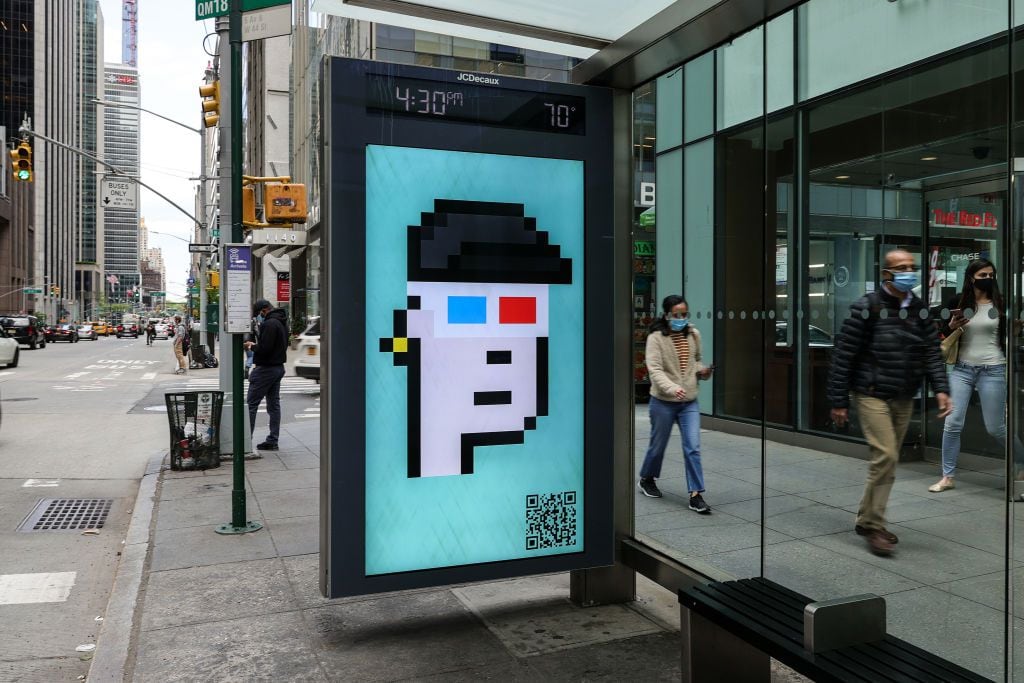NFTs are all the rage these days. At a first glance, they may seem like a fun pandemic distraction, a Twitter trend inspiring collectors to change

NFTs are all the rage these days. At a first glance, they may seem like a fun pandemic distraction, a Twitter trend inspiring collectors to change their profile pictures to colorful little avatars, like the $280,000 Serena Williams CryptoPunk pin Alexis Ohanian wore to the Met Gala.
Wait – a pixelated cartoon valued at $280,000? Maybe NFTs are worth a deeper look.
As more financial advisors are learning, NFTs are starting to catch on, even among non-celebrities. And it may not be long before a client asks you how to include NFTs in their portfolio.
This column originally appeared in Crypto for Advisors, CoinDesk’s new weekly newsletter defining crypto, digital assets and the future of finance. Sign up here to receive it every Thursday.
While the jargon used by the NFT community may be head-spinning, there’s something to these pieces of digital art. The technology itself isn’t too hard to grasp (at least not on a conceptual level), but what’s truly exciting is the potential this technology brings – and where it could take us in the future.
So what exactly is an NFT? And how will you advise clients when they wonder if they should buy digital tokens? Ahead, I’ll help demystify this new form of a digital asset.
What are NFTs – and will they live up to the hype?
The acronym “NFT” stands for non-fungible token. That’s a fancy way of saying irreplaceable, or not interchangeable. Dollar bills, for instance, are fungible. One dollar bill represents the same thing as the next dollar bill. As long as none are counterfeit, a cashier will accept any of the dollars you have in your wallet. It makes no difference which one you choose to pay with.
Most cryptocurrency is also fungible. One bitcoin, for instance, is equal to one bitcoin, is equal to one bitcoin. The actual file transferred is irrelevant to its value, even though there is a finite number of bitcoin out there.
Non-fungible tokens, however, are not fungible. Minted on the blockchain, these digital files represent an asset that is unique and therefore scarce. Those cute CryptoPunk cartoons might look similar to one another, but the digital record stamped upon the blockchain can verify which is which, and, more importantly, who owns it. When ownership is transferred, the blockchain records that, too.
If you’re tech-minded at all, it doesn’t take a lot of imagination to understand how this new technology opens up a world of possibility that could change how we record and transfer digital ownership. We already understand how to send digital files like PDFs, JPGs, and more – but NFTs add a new layer of data validation.
There’s even such a thing as smart contracts, where a creator can code royalties into their NFT, so that any time the asset is sold again on a secondary marketplace they (and anyone else they want to write into the code) keep getting paid. Compared to the ‘90s when any neighborhood kid could simply burn a CD or download their favorite songs on Napster, exchanging NFTs on blockchain creates a record that is stored into, as far as we can comprehend, perpetuity.
Last, NFTs aren’t just about art, though that is the most popular context in which they’re being discussed right now. Technically, an NFT can be any kind of file, says Jordan Lyall, chief product officer and co-founder of the NFT marketplace Nifty’s.
“It’s almost just a kind of new file format,” he says. “Netflix used to put movies in the mail, but when the technology got good enough, they started streaming. It’s kind of the same thing.”
Now, NFT technology is winning over the art community, but it’s just a hop, skip and a jump away from being used for ticketing, property deeds – and maybe even for financial security ownership, says Lyall.
“I can see at some point Nasdaq is running completely on a blockchain,” says Lyall, who started the NFT farming site dontbuymeme.com before he founded Nifty’s. Having experienced firsthand what kind of innovations come about through experimentation, he expects NFT technology to keep snowballing until it is ubiquitous.
But now we’re getting speculative (see how easily excitement creeps in?). Let’s refocus and discuss where and how your clients can trade NFTs.
What is an NFT marketplace?
To buy and sell NFTs, your clients must first pick the NFT marketplace and wallets of their choice.
Similar to Amazon or eBay, an NFT marketplace is a platform where users can store, display, trade and, in some cases, mint (create) NFTs.
Users will need a funded crypto wallet that’s compatible with whatever blockchain network used by the marketplace they want to buy or sell an NFT in. MetaMask, for instance, is a popular wallet run on perhaps the most popular blockchain platform, Ethereum. Marketplaces that use Ethereum include OpenSea, Rarible and SuperRare, to name a few.
Sometimes, users can fund their wallet with U.S. dollars through automated clearing house (ACH) transfers or other means. Nifty’s, for instance, lets users…
www.coindesk.com
